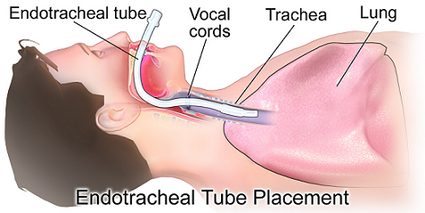Tidal Volume Calculator
Are you a medical student, intern, or maybe an anesthesiologist looking for some advice on the intubation technique? With this tidal volume calculator, you get both precise tidal volume ranges, determined by the height of your patient and the recommended length of the tube.
In the article below, you can find the tidal volume definition, some ETT tube use examples, such as sepsis (with high qSOFA score) or general surgery, and a practical case used to help explain this tidal volume calculator.
We try our best to make our Omni Calculators as precise and reliable as possible. However, this tool can never replace a professional doctor's assessment. If any health condition bothers you, consult a physician.
ETT - EndoTracheal Tube use
A tracheal tube is a catheter that physicians apply to support proper ventilation of the patient. They insert it through the patient's mouth or nose and into the trachea in case of, e.g., severe pneumonia.
When else do we use endotracheal tubes?
-
During general surgery and after big operations, to allow mechanical breathing and volatile anesthetic inhalation;
-
To protect the airways from the aspiration of the stomach's content into the lungs, especially in unconscious patients. Doctors assess the need to insert the tube using the Glasgow Coma Scale, which is an objective way to record a person's consciousness. Why do we want to prevent aspiration? Well, it frequently causes pneumonia.
-
To support breathing in patients with difficulties or in those unable to breathe themselves. More precisely, pneumonia, e.g., patients with high COVID-19 mortality risk, unconscious patients after stroke, overdose, or serious injury. Also, when a patient requires strong sedatives which may impede breathing, assistance from mechanical ventilation is a safe pick.
-
Premature neonates may manifest respiratory distress; then, a neonatologist might decide on the temporary use of an endotracheal tube.
Endotracheal tube characteristics
For human use, endotracheal tube size differs between 2 mm and 10.5 mm. The size depends mostly on the patient's height, with the smallest sizes being given to neonates and small children.
Correct tube insertion into the trachea provides proper oxygenation and controls breathing in the patient. The doctor should double-check, mainly by auscultation, whether the tube is correctly placed and not in the bronchi or esophagus.
For the above-mentioned correct insertion, the length of the tube should be adjusted to the patient's height. In this calculator, you'll find out how deep into the trachea you need to put the ETT.

Tidal volume definition - what is tidal volume?
What is tidal volume (TV)? It's the volume of air generally exchanged between the lungs and the external environment. In other words, the amount of air you inhale or exhale without any special effort. An adult should have a TV between 6 and 8 mL per kg of body mass. It may be rounded to 500 ml per inspiration, yet with this calculator, you'll get the exact volume.
What is the tidal volume calculator?
Now that you understand the tidal volume definition, we need to introduce you to this calculator. All you need to know is the patient's sex and height, based on which this tool estimates the tidal volume range and the depth of the ETT insertion. How? We calculate the ETT depth from the right upper canine with the Chula formula:
ETT [cm] = 0.1 * height [cm] + 4
The tidal volume range is between 6 and 8 mL/kg of body mass. However, to be exact, you should take into consideration your ideal body weight. Use the below equations to calculate ideal body weight (IBW), for:
- female,
IBW = 45.5 + 2.3 * (height [in] - 60); and - male,
IBW = 50 + 2.3 * (height [in] - 60),
or, if you prefer SI units:
- female,
IBW = 45.5 + 0.9 * (height [cm] - 152); and - male,
IBW = 50 + 0.9 * (height [cm] - 152).
Once you have the ideal body weight, the minimal tidal volume is 6 ml/kg * IBW and the maximal tidal volume is 8 ml/kg * IBW.
Let's get down to business!
To make life easier for you, we prepared a short example of how to use this calculator. Jessie is a medical intern, and recently, they've had quite a lot of patients with severe COVID-19 symptoms. One of them has just come in and needs prompt intubation, as he's developing sepsis. Unfortunately, no specialists are available at the moment.
Jessie then uses this tidal volume calculator to estimate the depth and tidal volume. The patient is a 65-year-old female, 167 cm (65.75 in) tall. Thus, her ETT is:
ETT = 0.1 * 167 + 4 = 20.7 cm
from right upper canine, and her ideal body weight is:
45.5 + 2.3 * (65.75 - 60) = 58.73 kg.
Therefore her tidal volume should be somewhere between 6 and 8 ml/kg of body mass:
6 * 58.73 ≈ 352 ml and 8 * 58.73 ≈ 470 ml